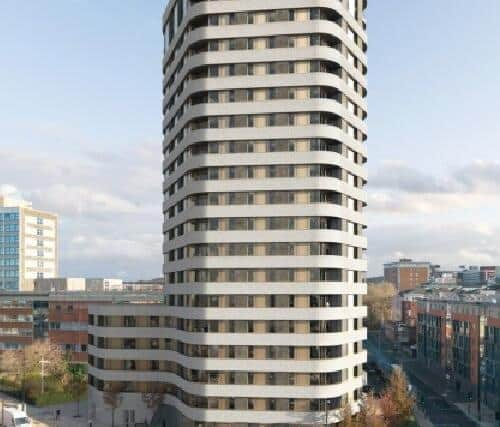Preston apartments that were planned for rent will now be offered for sale
and live on Freeview channel 276
Preston City Council’s planning committee gave the go-ahead to the 120-dwelling scheme, at the junction of Walker Street and Moor Lane, in July.
Councillors unanimously approved the building's hexagonal-shaped design, which will tower over the city’s university quarter and was described by one of the authority's planning officers as being like nothing else in the vicinity.
Advertisement
Hide AdAdvertisement
Hide AdCommittee members were told at the time that the part-19, part-five-storey development would be a “build-to-rent” (BTR) project - meaning that tenancies of at least three years should be offered to occupants and a clause put in place to ensure that the dwellings remain in the rental sector for the long term.


To that end, a 30-year covenant was to be included on the properties, meaning that if any of the units were sold within that timeframe, the council would be able to “clawback” compensation for their loss.
However, less than six months after it was given the green light, the proposal was back before the planning committee - but now minus the guaranteed rental element.
A report by council planning officers stated that the applicant, Preston-based Portergate Developments (Preston) Limited, had now advised the authority that the BTR requirements were “too restrictive” and requested that they be removed.
Advertisement
Hide AdAdvertisement
Hide AdCase officer Laura Holden told committee members that because the proposed rental obligations were “explicitly referenced” when they made their original decision, it was felt that they should “consider the planning application afresh”.
Councillors were told in July that the developer had successfully argued that the project would not be viable if it had been demanded that 20 percent of the BTR properties also fell into the “affordable homes” category” - the usual volume expected for such a scheme.
On an open market development of the type now being proposed, the proportion of affordable properties should, under Preston planning policy, rise to 30 percent. However, the applicant once again submitted a viability assessment contending that the affordable housing requirement under the open market scenario would also be unviable - a conclusion with which the council’s own appointed assessors agreed.
The planned change from rental properties to dwellings for sale did not prompt any debate amongst the committee and the switch was approved unanimously.